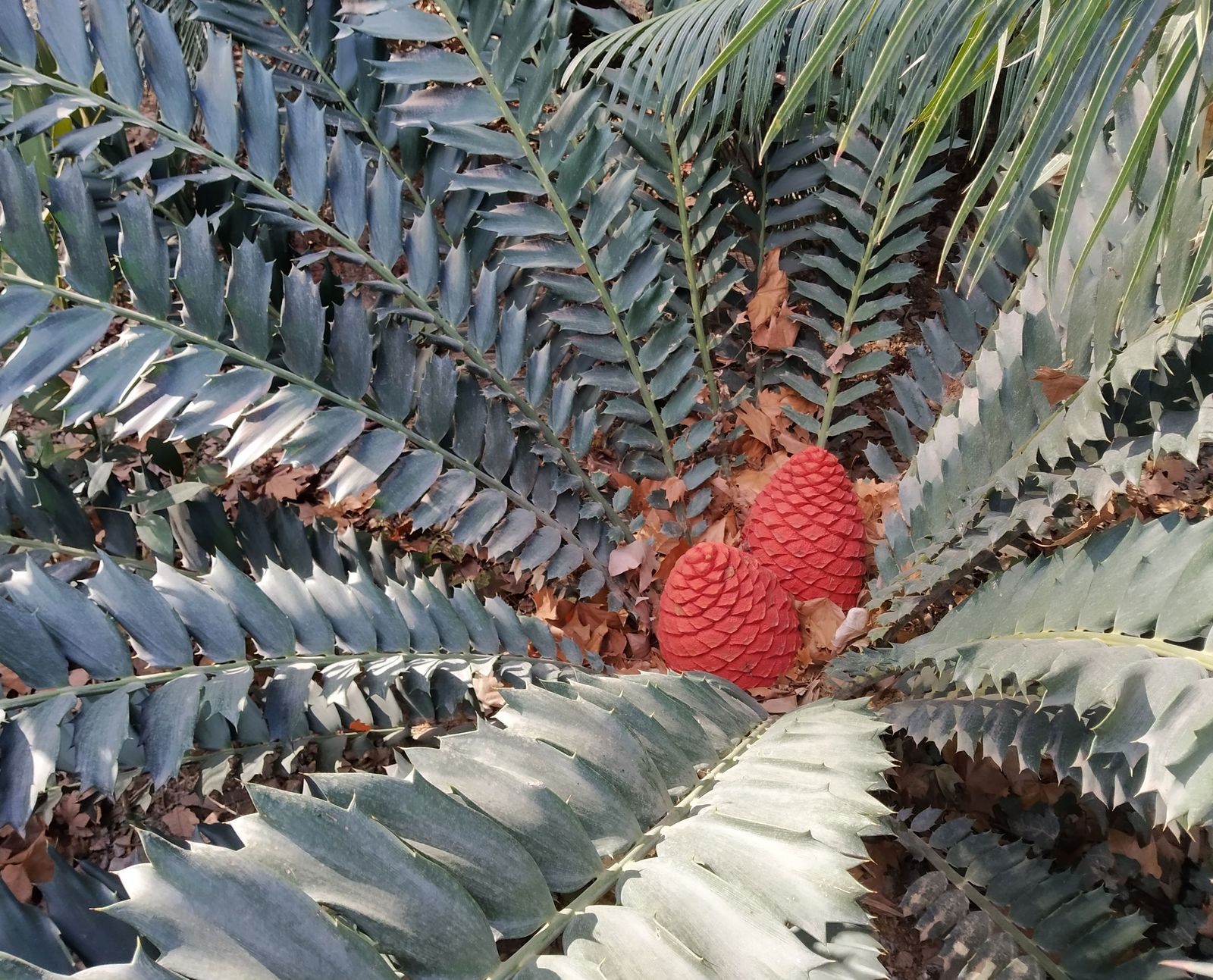Encephalartos ferox
Nombre científico: Encephalartos ferox G.Bertol.
Familia: Zamiaceae
Common name: Maputaland cycad, Tongaland Cycad, Zululand Cycad
Cycads are generally considered living fossils, because they have survived from 200 million years ago to the present day with very few variations. We are looking at a very beautiful and ornamental species of the family Zamiaceae. It is native to the eastern part of southern Africa, where it lives in the dunes near the ocean or in forests. The name comes from the Greek (en, inside; kephale, head and artos, bread) because of the starch obtained from the inside of the trunk from which bread was made; ferox (latin word for ferocious) refers to the thorns on the leaflets of the leaves.
Tongaland Cycad has a partially underground trunk, which means that it can resprout after fires, which are frequent in the area. The leaves are 1 to 2 metres long, straight or slightly curved, shiny dark green; they are divided into leathery leaflets with thorns, reminiscent of holly leaves. It is a dioecious plant, which means that it has separate sexes. The reproductive organs are grouped in cones or cones of a spectacular red colour, although there are also orange or yellow cones. They are about half a metre long, the female ones are somewhat smaller, ovoid in shape, almost without a stalk, with red seeds; the male ones are narrower and cylindrical, with a stalk of more than 10 cm.
La especie se describió por primera vez en 1851, a partir de material recolectado en Mozambique. Por la presión humana su área de distribución se ha reducido, por lo que hoy se considera en riesgo de extinción. Las semillas son tóxicas, pero muchos animales, como monos y pájaros, se comen la cubierta carnosa y luego las escupen, lo que ayuda a la dispersión de la planta. Vive bien en climas cálidos y en suelos bien drenados, no soporta heladas; al sol, o mejor a semisombra. En La Concepción hay un ejemplar femenino en la colección de plantas primitivas, que a veces luce su llamativo cono rojo intenso.

